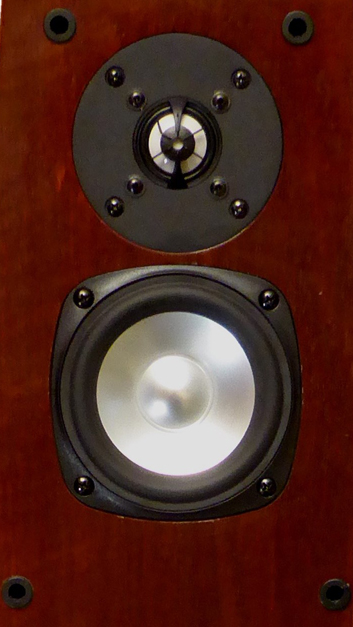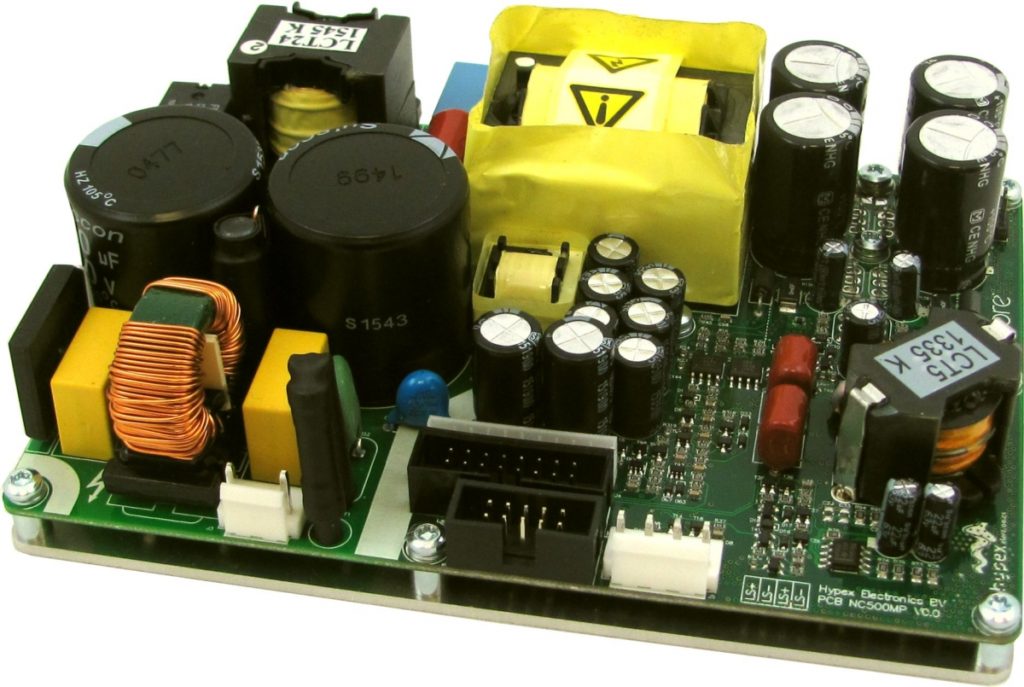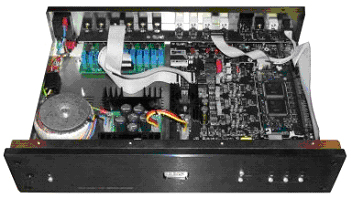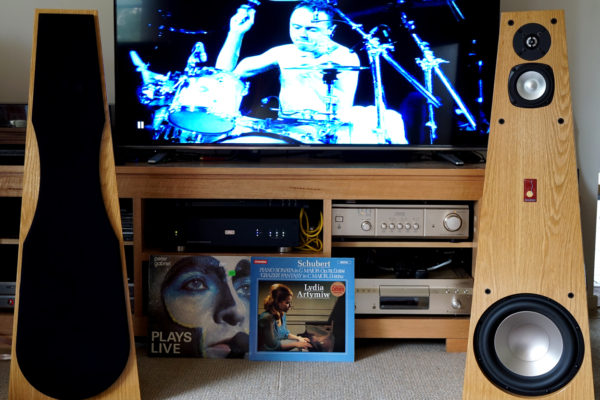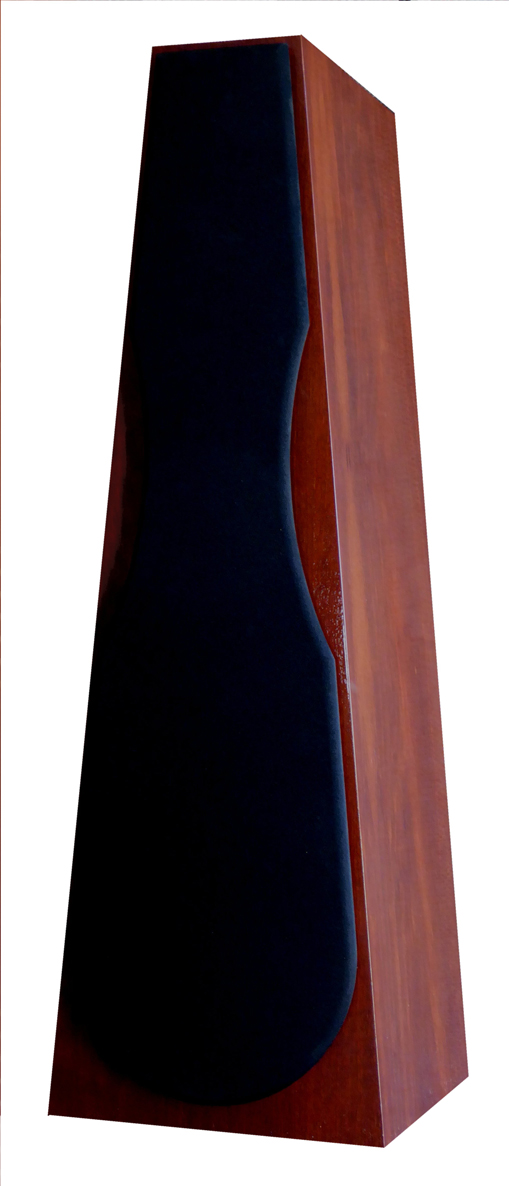The Big Red Actives cover the full range of hearing, from very deep bass to sparkling highs with a very flat frequency response; they also have the fast, open natural sound that makes all Legend loudspeakers famous – therefore are named after the active Big Red kangaroo which is a fast agile animal inhabiting the flat open Australian landscape!
Reviewing the original Big Reds, Australian Hi-Fi said ” Legend Acoustics’ Big Red loudspeakers are superb ……… quality recordings can present the listener with a dynamic and highly detailed reality-approaching facsimile of live music that can sometimes startle.” And at the annual Sound & Image/Australian Hifi magazines awards presentation in Sydney that year, they won the prestigious Best Stereo Loudspeakers over $2500 award.
As part of our process of continual improvement that enables you to benefit from our latest developments, the Big Reds have learnt a lot from our top-of-range Tikandi loudspeakers. With ‘form following function’ they use the same truncated pyramidal shaped cabinet with its non-parallel sides to reduce internal reflections so as to minimises standing waves which smear & muddle the sound. And the triangular front baffle also minimises external diffraction effects resulting in extraordinary imaging, both laterally and depth. The cabinet is heavily braced and lined internally with constrained-layer damping to also improve clarity.
The latest evolution of the Big Reds also continues to benefit from improved drivers. At their heart is a superb 100mm midrange unit made from a strong Aluminium alloy that remains pistonic well above the crossover point of 3 kHz. This results in very low distortion through the critical midband region allowing these vital frequencies to come through crystal clear and without the hardness or muddle of most loudspeakers in this region so you will hear all the nuances of the musicians playing. And the new midrange driver has a very big magnet and underhung voice coil that allows it to have large linear excursion at its bottom end enabling it to join very effectively in the upper-bass with the subwoofer.
For the bass unit we have chosen a bass unit recently developed by a renowned Norwegian manufacturer and built like the proverbial tank, weighing in at over 10 kg! Combined with a rigid die-cast Al support structure the unit has a very stiff Aluminium cone that also allows it to remain pistonic and so with very low distortion up to its crossover to the midrange unit at 200 Hz. The bass unit has a large 56 mm 4-layer voice-coil that combined with the massive 2.5 kg magnet system gives extraordinary grip, resulting in very tight bass notes. And its very large surround allows for 56 mm of cone travel allowing the bass to also go very loud and deep.
The tweeter is made from high strength Magnesium alloy coated on each side with very hard ceramic. It has very low distortion – giving the great clarity in the treble, and not with 3 tea-spoons of sweetness as some other tweeters do that makes everything sound the same but not as it was played and recorded.
More recently we replaced the ‘passive’ Xover version of the Big Reds by a completely ‘active’ version where built-in Hypex Ncore amplifiers are connected directly to each driver, bringing your music even more ‘alive’. The bass/sub is connected to a built-in 500W Ncore amplifier to give great bass depth and power but also detail and texture; while the mid and treble are connected to a built-in 125 W Ncore amps to give extraordinarily low distortion and clarity. That’s 750W per speaker or 1500W in total!
Each driver amplifier is connected by balanced XLR leads to a DEQX preamp/processor that separates out (crossovers) the bass, mid and treble signals in the digital domain where it can be done much more accurately, and with steeper slopes while retaining minimum phase distortion, than in the analog domain by ‘passive’ crossover filters. In addition we measure each driver with a very high quality microphone using the DEQX processor and it also corrects for any remaining frequencies and phase non-linearities.
The final output from the BRAs is therefore extraordinarily accurate in both frequency and phase. The former leads to very natural tonal balance of all instruments, including voices; while the latter results in incredible speed and timing of your music plus superb imaging, both lateral and in depth.
However, the overall sound quality is also affected by your room. At various frequencies/wavelengths depending on room dimensions sound can resonate to form ‘standing waves’ that can give 10 dB or more of non-linearity at your ears. Although these standing waves should be reduced as much as possible by physical means (dispersion and adsorption) the DEQX processor can also help correct for them by measuring and applying inverse corrections, We will help you do this during set-up of your Big Red Actives.
Finally is should be noted that the DEQX units are also an extremely good pre-amps with volume control as well as 4 inputs, 2 analog and 2 digital. So given the power amplifiers are built-in to the BRAs, all you have to do is connect your music sources to the inputs of the DEQX unit to have a complete audio system. And one with extraordinary clarity and fidelity/faithfulness to your music. Just like being there!
An excellent review of the BRAs is published on SoundStage Australia – for full review please click here. These are some quotes:
“All that low distortion adherence by the designer’s engineering philosophy and driver choice has no option but to reflect on the ultimate sound………(it) has a quickness and startling attack in terms of both transient information and overall dynamic expression. And obviously notable is the extraordinary low level resolution of nuance and micro-dynamics. The old cliché of ‘seeing into the recording’ most resoundingly applies here.”
“The Neil Crowley Trio’s “Skies are rare” for the band’s The Face of Mount Molehill release features a mellow piano theme accented with powerful full band crescendo’s peppered throughout the song in a swelling and ebbing flow. The BRAs were equally subtle in the tonal and harmonic recreation of hammer on string and vicious in the handling of the powerful drum attacks. The bass notes were delineated against the musical onslaught and defined in terms of detail.”
“(Further) with the DEQX’s and Legend Acoustics strict adherence to phase accuracy, the net results were clearly observed in the BRAs’ large soundstage reproduction, both laterally and in terms of depth, with precise image placement and focus.”
“What more can a music lover ask for? Highly recommended.“




